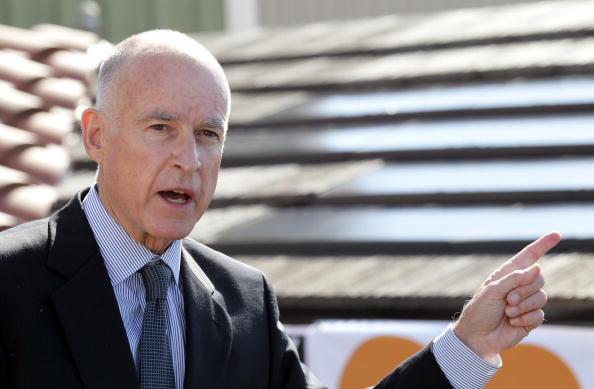California Now Has Toughest Climate Targets In North America

California Governor Jerry Brown just upped the ante in the state's ongoing campaign to reduce its greenhouse gas footprint. In an executive order issued Wednesday, Brown set a goal of reducing California's greenhouse gas emissions to just 60 percent of what the state emitted in 1990.
That target, with a deadline of 2030, is an intermediate step in an existing longer-term plan to cut the state's emissions to just 20 percent of 1990's levels by 2050. That 2050 goal was set by the Global Warming Solutions Act of 2006, which requires that the state reduce its emissions to 1990 levels by 2020 -- just five years from now.
"With this order, California sets a very high bar for itself and other states and nations, but it's one that must be reached -- for this generation and generations to come," said Brown Wednesday.
The reductions targets are the toughest in North America, though the European Union has set similarly ambitious targets as well. Wednesday's order charges state agencies with authority to oversee greenhouse gas emissions by implementing legal measures to make the reductions happen.
Brown is ordering the California Air Resources Board to calculate the actual tonnage of emissions reductions required. In 2007, the Board calculated that the state emitted the equivalent of 431 million metric tons of CO2 in 1990, but that figure is a moving target, subject to change as we learn more about just how much greenhouse gas different industrial and natural processes contribute to the atmosphere.
Of that 431 million metric tons the Air Resources Board estimated California dumped into the atmosphere in 1990, the vast majority -- 386 million metric tons -- came from burning fossil fuels for energy. Of that amount, 91 million metric tons was released by electrical power plants, 64 million metric tons came out of the exhaust pipes of private cars.
Brown has recently called for increasing the percentage of electrical power the state obtains from non-carbon sources to 50 percent, and cutting tailpipe emissions from cars and trucks by the same amount.
Since then, the state's greenhouse gas emissions seem to have peaked in 2004, at 492 million metric tons, and declined overall from then until 2012, the most recent year for which the Air Resources Board provides data. In 2012, according to that May 2014 Board estimate linked above, Californians emitted 458.7 million metric tons of greenhouse gases, six and a half percent above 1990 levels.
Climate pundits applauded Brown's order Wednesday. "Four consecutive years of exceptional drought has brought home the harsh reality of rising global temperatures to the communities and businesses of California," said World Bank Group President Jim Yong Kim. "The decision today by Governor Brown to set a 40 percent reduction target for 2030 is an example of climate leadership that others must follow."
"California has a critical opportunity -- and responsibility -- to head off the worst impacts of climate change on our environment and our communities," said Environment California's Michelle Kinman. With today's executive order, Governor Brown has demonstrated a strong commitment to tackling climate change here in California."


